Summer is a beautiful time of year, but it’s also the time of year those dreaded weeds try to take over your lawn and garden. Now is the perfect time to begin your final preparations to keep your greenery safe from them. Each weed is unique, so we’ll be sharing 8 common Colorado weeds, and how to prevent or combat each one.
The Weeds:
Lamb’s Quarters Chenopodiaceae Chenopodium album
What is it?
Lamb’s Quarters is incredibly common in Colorado. Like many other weeds, Lamb’s Quarters depend upon disturbed ground and is often foraged for its edible greens and seeds. The plant is related to spinach and is delicious in salads and sauteed. This does not mean you should keep it around, feel free to harvest it when you see it, but prolonged growth will enable it to take over your garden and lawn.
How to Prevent/Control It
- Pre-emergent pesticides.
- Consistent mowing.
- Aerating your lawn.
- Minimize foot traffic (Lamb’s Quarters likes disturbed ground, like places we walk).
- If Lamb’s Quarters sprouts, use a pesticide for the seeds yet to sprout and hand pull the weed, preferably while the plant is still young. You can tell the plant is young by the blue/purple undertone on the underside of the leaves.

Bindweed Convolvulaceae Convulvus arvensis
What is It?
Bindweed, also known as Morning Glory or Creeping Jenny is a vining weed with small white flowers. Bindweed is loathed by many because it is so difficult to kill. The plant spreads with both seeds and by its roots, so if even a fraction of root is left in the ground, the bindweed will come back. It will come back again, and again, and again.
How to Prevent/Control It
- Use landscape fabric under problem areas.
- Use mulch around problem areas.
- Careful application of total vegetation killer (this will kill everything it touches, so be very careful if you take this route).
- Begin the hand weeding war. If you are consistent in pulling out the bindweed, you can tire the plant out over time.
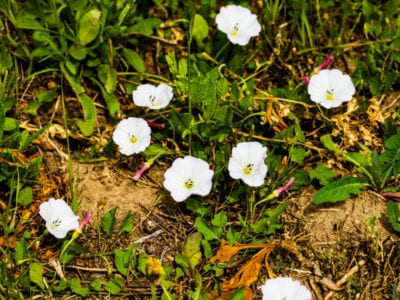
Dandelions Asteraceae Taraxacum Verbascum
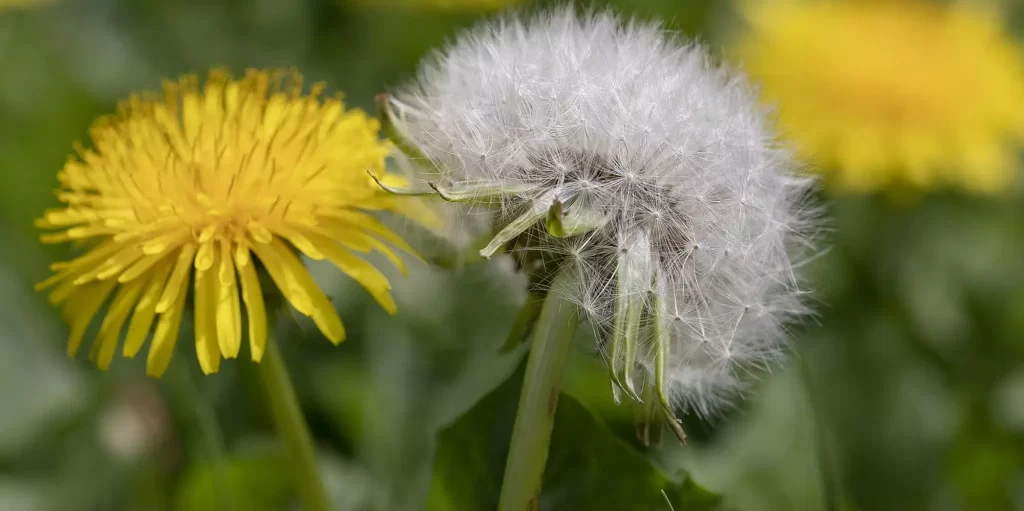
What is it?
Dandelions, hated by lawn owners and adored by their children. These little yellow flowers are well known all across the country. Dandelions are also edible, as long as they are not sprayed with a pesticide treatment. Many people make dandelion sweets with the flowered heads and use the bitter greens for salads. These yellow flowers form white seed heads that are carried off by wind and multiply.
How to Prevent/Control It
- Cut at a higher mower setting, dandelions love the sun, so this can choke them out.
- Use pre-emergent pesticides (Note: Do not prepare and eat dandelions sprayed with this, if they do sprout).
- Adjust your soil’s PH to be more Basic.
- Avoid hand weeding and reach for a trowel. Dandelions have tap roots so it is imperative to remove the entirety of them.
Quackgrass Poaceae Elytrigia repens
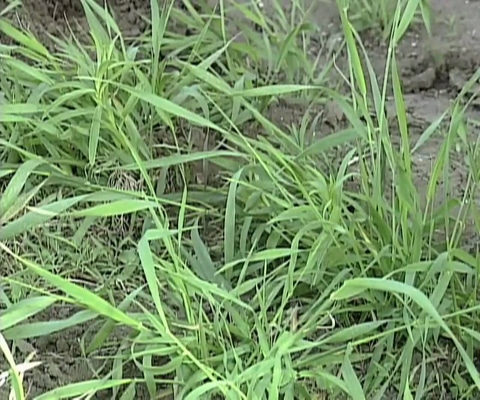
What is It?
Quackgrass is a weed that resembles crabgrass and ryegrass but they are not the same. Quackgrass, unlike crabgrass, has a deep root system that it uses to spread all across your lawn. It often gets into your lawn via seeds, spreading rhizomes from a neighbors yard or even straw bales. It is also on the Colorado Noxious Weed List as a C species.
How to Prevent/Control It
- Non-selective herbicides to kill while it is growing, seed this area after the quackgrass is dead. This can cause damage to your lawn.
- Cut grass on a higher setting.
- Take care of your lawn and ensure a thick plush and healthy lawn, it’s harder for quackgrass to seed in a plush lawn.
- Use nitrogen fertilizer.
Kochia Chenopodiaceae Kochia scoparia
What is It?
Similar to Lamb’s quarters, Kochia is also a member of the goosefoot family and is also edible. The plant is incredibly salty, and the seeds are often called “land caviar” due to their similar texture. Because it spreads through seeds, it is fairly easy to hand weed kochia, but you should do it while it’s young. Similar to Lamb’s quarters, you can tell the plant is young from the blue-purple tint on the underside of the leaves.
How to Prevent/Control It
- Mow or slash the plants before they can flower to limit seed production.
- Hand weed while the plant is young.
- Use fluroxypyr herbicide.
- Till the ground well in Spring to limit them.
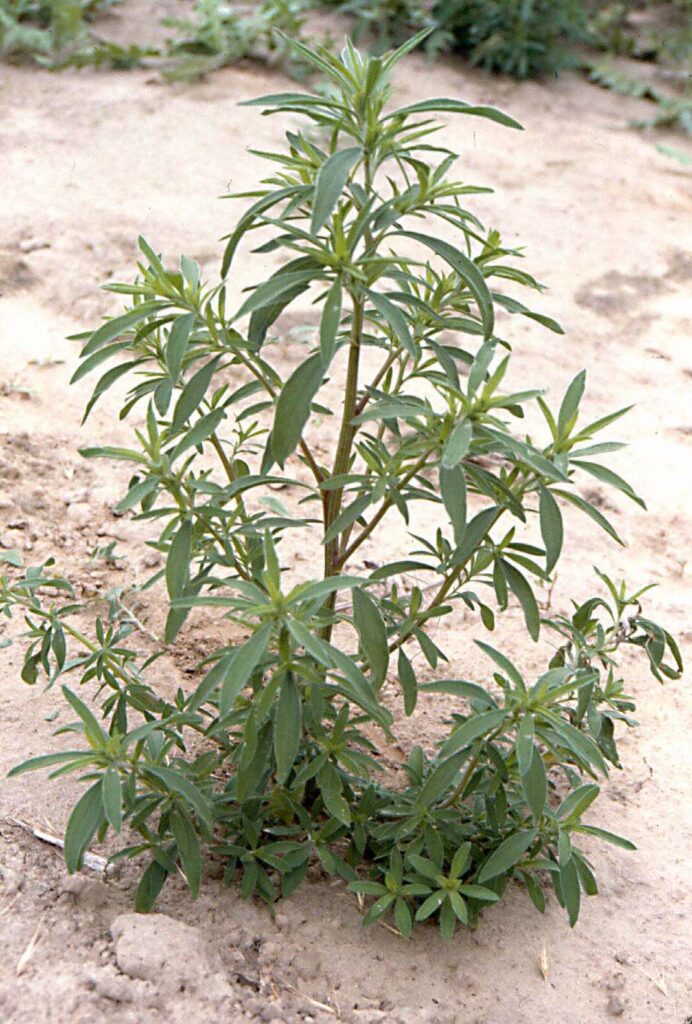
Purslane Portulacaceae Portulaca oleracea
What is It?
Purslane is another delicious edible weed, it’s high in omega-3 fatty acids and is incredibly healthy for you. However, it’s not healthy for your lawn or garden. Despite its health benefits and watercress-like flavor, it can and will take over all of your other plants. When given the chance to seed, a single plant can produce over 200,000 seeds. Don’t fret, you can hand weed these.
How to Prevent/Control It
- Hand weed while the plant is young.
- Double bag the weeded plants to ensure no seeds can make their way back to your yard or garden.
- Mulch around the problem area or cover with landscape fabric.
- Use herbicide only if the plants are young, it is not as effective on more mature plants.
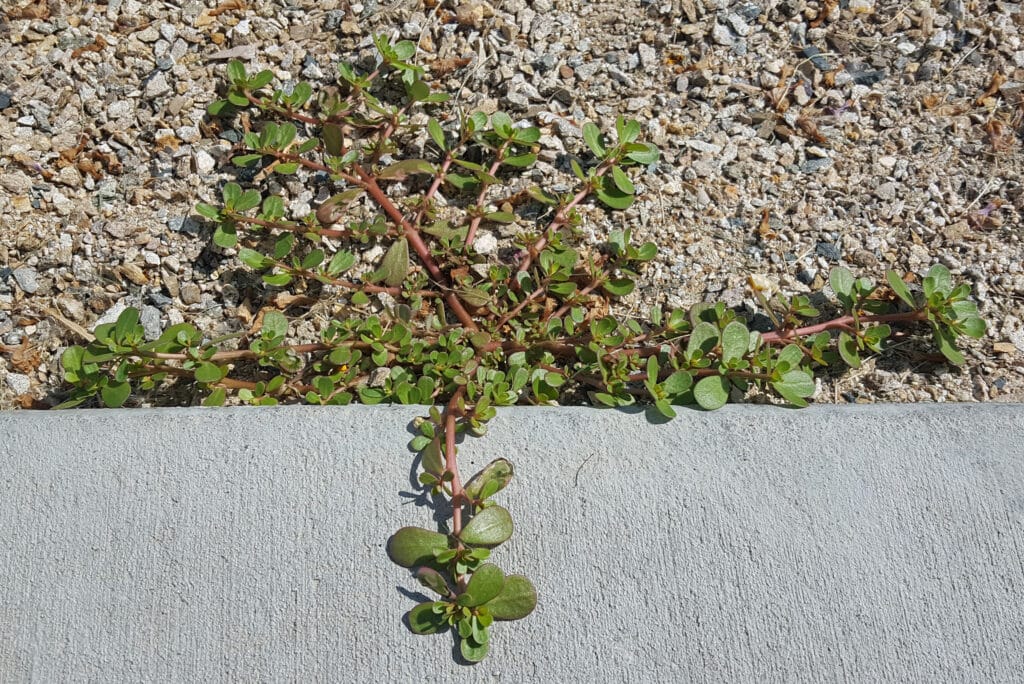
Creeping Thistle Cirsium arvense
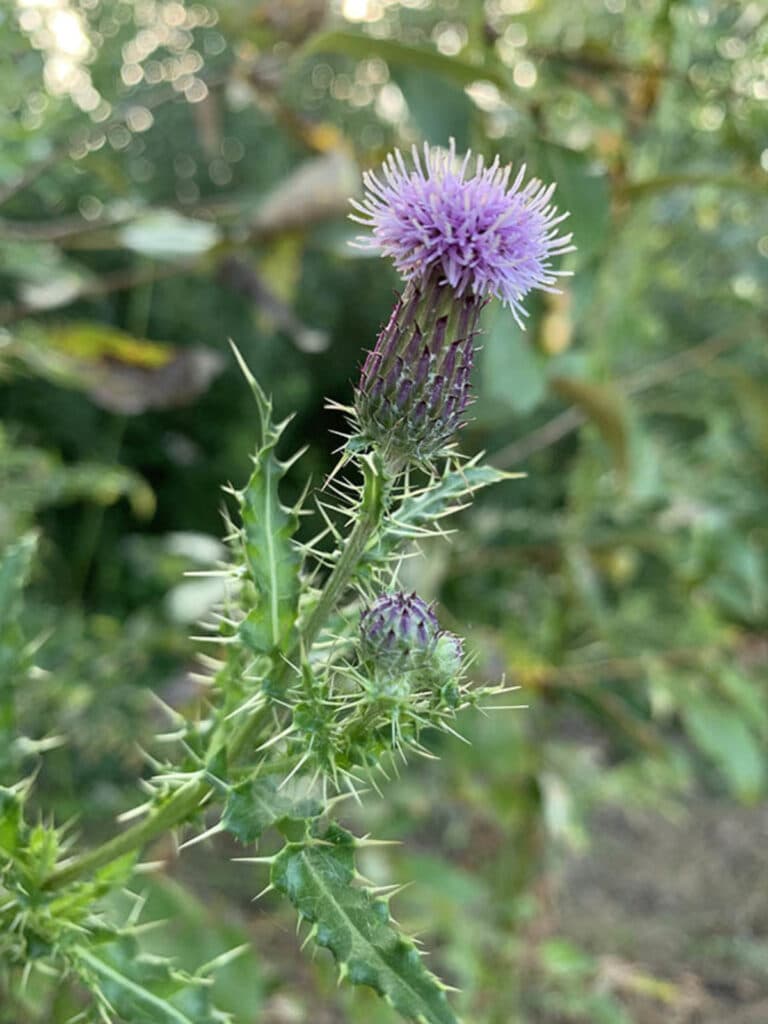
What is It?
Creeping Thistle, also known as Canada Thistle is a weed known for its small purple flower heads and white fluff. The plant can grow up to 5ft tall and spreads through both roots and seeds. It is highly adaptive, which makes it a nuisance to get rid of, and once they appear, it’s better to do everything in your power to control the spread.
How to Prevent/Control It
- Cover problem areas with an opaque covering to ensure they get no sunlight.
- Dig up any young plants the moment they appear. Remove all roots.
- Seal plants in bags once removed, and leave bags in the heat until they die.
- Mow before the seed-bearing begins to remove the heads and reduce spread.
Curly Dock Rumex crispus
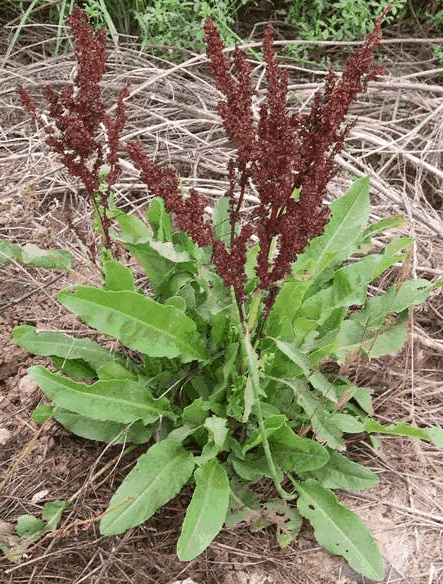
What is It?
Curly Dock is a member of the buckwheat family that many foragers enjoy eating. It is a versatile ingredient, and an even more versatile garden invader. The seeds of a Curly Dock can lay dormant underground for 50 years and still be capable of germinating. Which is only part of why it feels so impossible to get rid of, they also spread underground via their roots and can form huge clusters.
How to Prevent/Control It
- Mow Regularly.
- DO NOT ALLOW ANIMALS TO GRAZE ON IT TO CUT IT DOWN. It is incredibly toxic to livestock.
- Pre-emergent pesticides.
- Herbicides containing Dicamba or Chaparral.
Still Struggling With Weeds?
We’re here to help. Check out our Bed Weed Control Program.
Other Great Articles about Lawn Care Trips

Understanding How Pre-Emergent & Post-Emergent Weed Control Products Work
Weeds can be the bane of any homeowner’s lawn, especially in central Colorado. If you’re battling these pesky intruders, understanding the differences between the various weed control products available can be daunting. That’s why we’re going to explain the two main types of weed management products, pre-emergent and post-emergent herbicides. As you read on, you’ll…
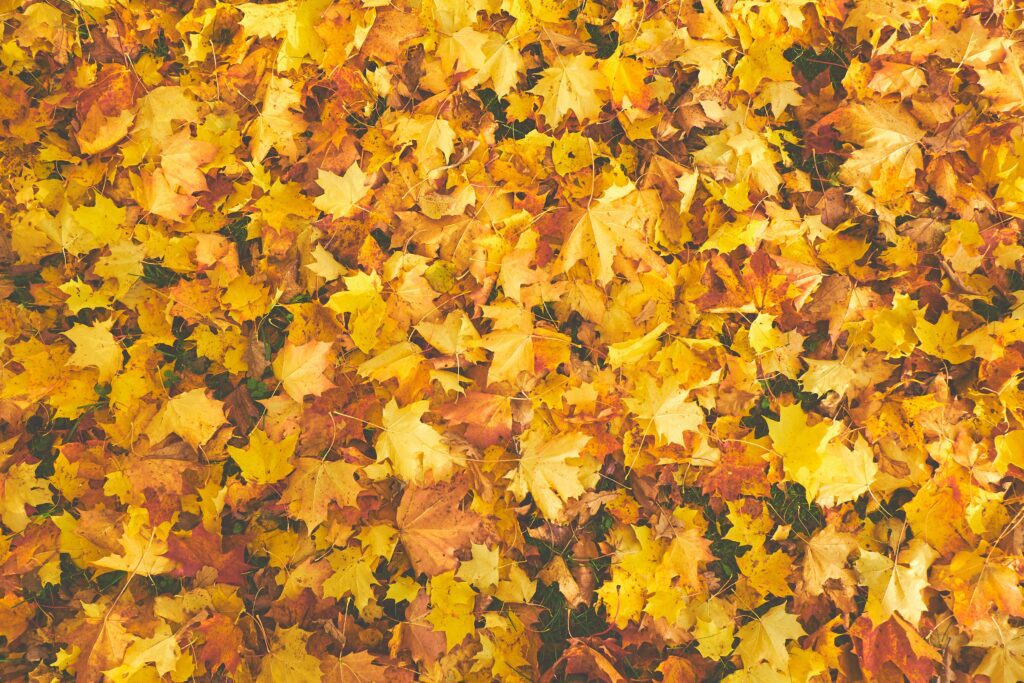
The Complete Guide to Fall Lawn Care: Best Practices for Preparing Your Lawn for Winter
Is this your first fall as a Colorado Springs homeowner? Whether you’re ready to winterize your lawn for the first time or simply need a fall lawn care refresher for the home you’ve lived in for years, these essential lawn care basics will help you transition your lawn from the summer season to winter. Fall…
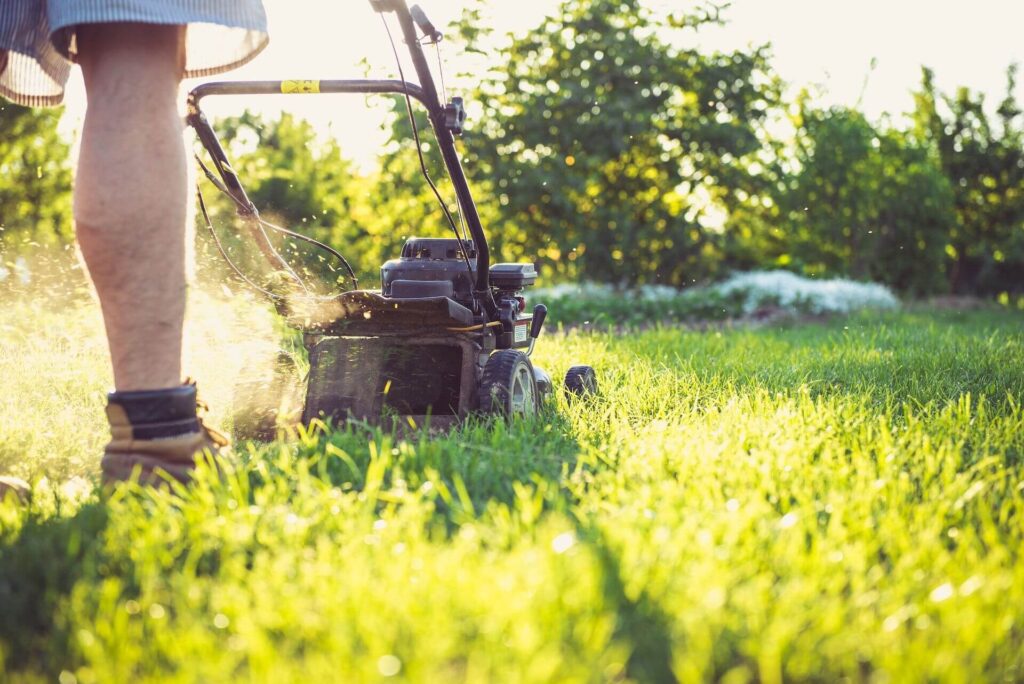
The Complete Guide to Lawn Mowing + Lawn Mowing Tips for Colorado Springs Homeowners
Mowing your Colorado Springs lawn is more than a weekend chore; it’s essential to keeping your green space healthy and attractive. You may think the only purpose of mowing is to keep your grass from getting unruly. However, your mowing practice can actually help increase your lawn’s density and encourage deep root growth, two factors…
